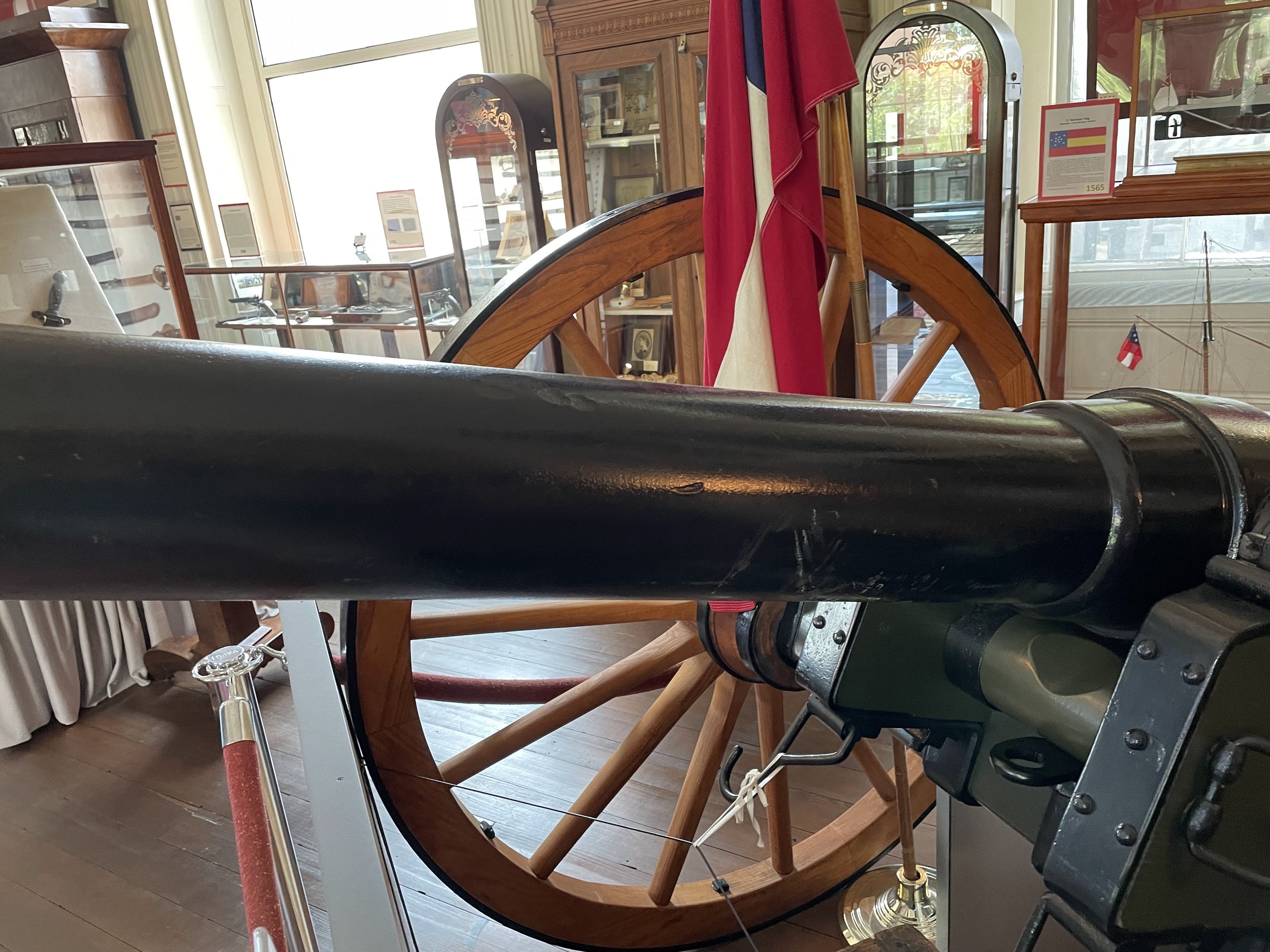3.56-Inch Cameron Rifle at the Museum at Market Hall
3.56-Inch Cameron Rifle displayed at the Museum at Market Hall in Charleston, South Carolina
A 3.56-Inch Cameron Rifle is displayed at the Museum at Market Hall run by the UDC in Charleston, South Carolina where it has been displayed since the end of the 19th Century. This piece is said to have been used against gunboats of the United States Navy near Georgetown, South Carolina. Light rifled artillery could prove hazardous to wooden ships operating close inshore or in the many inlets of the South Carolina Coast.
The piece is described in some detail in Warren Ripley’s excellent “Artillery and Ammunition of the Civil War” (pg.179-180). It’s bore has 6x6 rifling. It’s overall length is 83.5 inches. It’s trunnions are 3.1 inches in diameter.
Ripley’s book contains an extract from a 1906 letter by Maurice Quinlivan who took part in its construction which states that the piece “was made at the machine shops of Cameron, Taylor, and Johnson in Charleston, S.C. Mr. Archibald Cameron superintended the construction. My brother, Michael Quinlivan, had charge of the forging of the same and I assisted him. I know that the iron used was a tough, wrought iron formerly used as tires on the wheels of locomotives of the South Carolina Railroad which locomotives were in 1861 in the scrap heap in the yard of that railroad. I believe my brother told me the tires were from the wheels of one of the earliest locomotives used on that railroad, the first long railroad built in the world.”
I might describe this piece as “artisan made”. It is unique - or nearly so as Ripley notes a possible wartime reference to two such cannons. It appears to have been made of good quality wrought iron. And it seems to have been specifically sought after for preservation after the war. My hunch is that it rendered specialty coastal service effectively- not unlike the 2.75-Inch Whitworth used near Fort Fisher - and was seen as worth preserving after the war.
Ripley disagreed with the story that the piece was significantly longer until captured and damaged by Sherman’s troops - it would be muzzle-heavy in that case, swinging down on its trunnions unless the breech was held in place with straps. Ripley also notes that at the time of his research (1960s), the carriage was thought to be original. The present carriage is clearly a relatively new wooden carriage.
Ripley notes that the stamping on the trunnion band reads “To The State of South Carolina From Plowden C. J. Weston” and believed this to refer to a post-war gift of the salvaged piece.
For years the cannon was displayed on the front porch of the Market Hall (built 1841) of the City Market. In a circa 1920 photo, the cannon can be seen - likely placed as something of an enticement to come see the contents of the museum. While it is pictured in Ripley’s book inside the museum, the photo in Hazlett/Olmstead/Parks shows it still on the porch and wearing a metal plaque is no longer present on the tube (Field Artillery Weapons of the Civil War, pg56).
The sign in the museum.
Early 1920s photo of the Market Hall in Charleston, South Carolina. Note the 3.56-Inch Cameron displayed on the porch. Library of Congress Photo: https://www.loc.gov/resource/agc.7a03011/
Recent photo of the 1841 Market Hall in Charleston, South Carolina

















